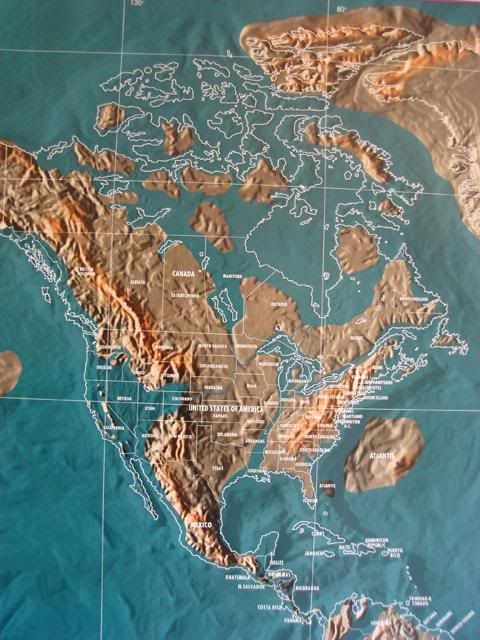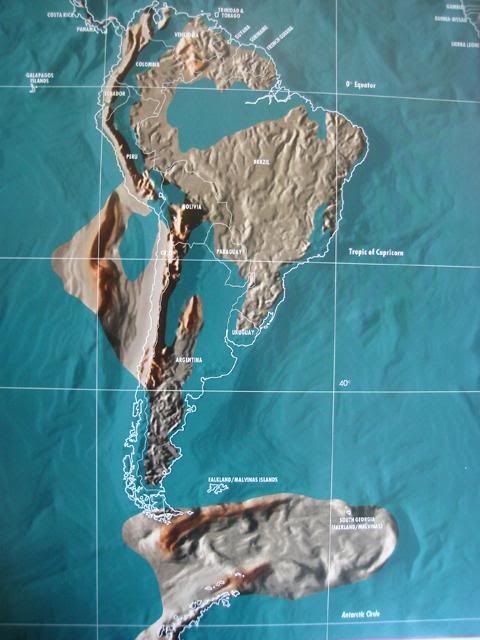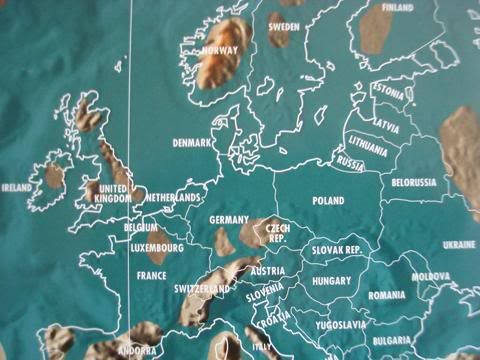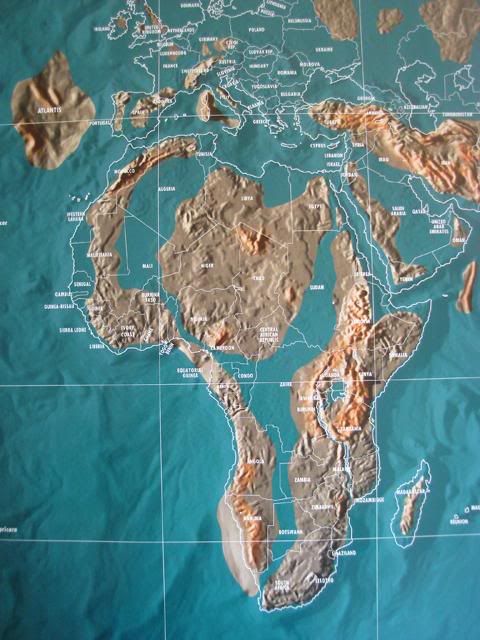2012 – movie trailer
***********************************************
Researchers To Send Submarine Under Antarctic Glaciers
***********************************************
Red Orbit
Posted on: Wednesday, 7 January 2009
http://www. redorbit. com/news/science/1619384/researchers_to_send_...
In an effort to seek clues to world ocean level rises in one of the most inaccessible places on earth, scientists are sending a yellow robot submarine to dive under an ice shelf in Antarctica
A U.S.research vessel will launch the 22 ft submarine to probe the underside of the ice at the end of the Pine Island glacier, which is moving faster than any other in Antarctica and already brings more water to the oceans than Europe's Rhine River
Large icebergs have been breaking off Antarctica's ice shelves — extensions of glaciers floating on the sea — for years, but scientists have been unable to get beneath them to see how deep currents may be driving the melt from below
Experts are now stepping up monitoring of Antarctica, aware that any slight quickening of a thaw could swamp low-lying Pacific islands or incur huge costs in building defenses for coastal cities from Beijing to New York
The rate of flow of the Pine Island glacier in west Antarctica has quickened to 2.3 miles a year from 1.5 miles in the mid-1990s
Adrian Jenkins, leader of the "Autosub" mission at the British Antarctic Survey, said it has taken everyone by surprise.The submarine cost several million dollars to develop
"If you just make measurements at the ice front all you have is a black box," Jenkins said."What we are doing is observing what is going on within the box"

The Beaufort Sea, just north of Alaska, where near-surface air temperatures are 7C higher than normal
*******************************************************
Has the Arctic melt passed the point of no return?
*******************************************************
Independent UK
By Steve Connor, Science Editor
Tuesday, 16 December 2008
Scientists have found the first unequivocal evidence that the Arctic region is warming at a faster rate than the rest of the world at least a decade before it was predicted to happen
Climate-change researchers have found that air temperatures in the region are higher than would be normally expected during the autumn because the increased melting of the summer Arctic sea ice is accumulating heat in the ocean.The phenomenon, known as Arctic amplification, was not expected to be seen for at least another 10 or 15 years and the findings will further raise concerns that the Arctic has already passed the climatic tipping-point towards ice-free summers, beyond which it may not recover
The Arctic is considered one of the most sensitive regions in terms of climate change and its transition to another climatic state will have a direct impact on other parts of the northern hemisphere, as well more indirect effects around the world
Although researchers have documented a catastrophic loss of sea ice during the summer months over the past 20 years, they have not until now detected the definitive temperature signal that they could link with greenhouse-gas emissions

In this July 19, 2007 file photo, an iceberg melts off Ammassalik Island in Eastern Greenland, More than 2 trillion tons of land ice in Greenland, Antarctica and Alaska have melted since 2003, according to new NASA satellite data that show the latest signs of what scientists say is global warming
*****************************************************
The big melt: 2 trillion tons of ice gone since '03
*****************************************************
Scientists say NASA satellite data on global warming 'should alarm people'
Associated Press
12-16-08
WASHINGTON - More than 2 trillion tons of land ice in Greenland, Antarctica and Alaska have melted since 2003, according to new NASA satellite data that show the latest signs of what scientists say is global warming
More than half of the loss of landlocked ice in the past five years has occurred in Greenland, based on measurements of ice weight by NASA's GRACE satellite, said NASA geophysicist Scott Luthcke.The water melting from Greenland in the past five years would fill up about 11 Chesapeake Bays, he said, and the Greenland melt seems to be accelerating
NASA scientists planned to present their findings Thursday at the American Geophysical Union conference in San Francisco.Luthcke said Greenland figures for the summer of 2008 aren't complete yet, but this year's ice loss, while still significant, won't be as severe as 2007
The news was better for Alaska. After a precipitous drop in 2005, land ice increased slightly in 2008 because of large winter snowfalls, Luthcke said.Since 2003, when the NASA satellite started taking measurements, Alaska has lost 400 billion tons of land ice
In assessing climate change, scientists generally look at several years to determine the overall trend
Wilkins Ice Shelf in Antarctic break-up (2008-03-25)
A chunk of ice the size of the Isle of Man has started to break away from Antarctica in what scientists say is further evidence of a warming climate, Satellite images suggest that part of the ice shelf is disintegrating, and will soon crumble away, The Wilkins Ice Shelf has been stable for most of the last century, but began retreating in the 1990s

**************************************************
As ice melts, Antarctic bedrock is on the move
**************************************************
Ohio State University
Published December 15, 2008
http://www. enn. com/top_stories/article/38862
COLUMBUS, Ohio -- As ice melts away from Antarctica, parts of the continental bedrock are rising in response -- and other parts are sinking, scientists have discovered
The finding will give much needed perspective to satellite instruments that measure ice loss on the continent, and help improve estimates of future sea level rise
"Our preliminary results show that we can dramatically improve our estimates of whether Antarctica is gaining or losing ice," said Terry Wilson, associate professor of earth sciences at Ohio State University
Wilson reported the research in a press conference Monday, December 15, 2008 at the American Geophysical Union meeting in San Francisco
These results come from a trio of global positioning system (GPS) sensor networks on the continent
Wilson leads POLENET, a growing network of GPS trackers and seismic sensors implanted in the bedrock beneath the West Antarctic Ice Sheet (WAIS).POLENET is reoccupying sites previously measured by the West Antarctic GPS Network (WAGN) and the Transantarctic Mountains Deformation (TAMDEF) network
In separate sessions at the meeting, Michael Bevis, Ohio Eminent Scholar in geodyamics and professor of earth sciences at Ohio State, presented results from WAGN, while doctoral student Michael Willis presented results from TAMDEF
Taken together, the three projects are yielding the best view yet of what's happening under the ice
When satellites measure the height of the WAIS, scientists calculate ice thickness by subtracting the height of the earth beneath it. They must take into account whether the bedrock is rising or falling.Ice weighs down the bedrock, but as the ice melts, the earth slowly rebounds
Gravity measurements, too, rely on knowledge of the bedrock. As the crust under Antarctica rises, the mantle layer below it flows in to fill the gap.That mass change must be subtracted from Gravity Recovery and Climate Experiment (GRACE) satellite measurements in order to isolate gravity changes caused by the thickening or thinning of the ice
Before POLENET and its more spatially limited predecessors, scientists had few direct measurements of the bedrock.They had to rely on computer models, which now appear to be incorrect
"When you compare how fast the earth is rising, and where, to the models of where ice is being lost and how much is lost -- they don't match," Wilson said. "There are places where the models predict no crustal uplift, where we see several millimeters of uplift per year.We even have evidence of other places sinking, which is not predicted by any of the models"
A few millimeters may sound like a small change, but it's actually quite large, she explained.Crustal uplift in parts of North America is measured on the scale of millimeters per year
POLENET's GPS sensors measure how much the crust is rising or falling, while the seismic sensors measure the stiffness of the bedrock -- a key factor for predicting how much the bedrock will rise in the future
"We're pinning down both parts of this problem, which will improve the correction made to the satellite data, which will in turn improve what we know about whether we're gaining ice or losing ice," Wilson said.Better estimates of sea level rise can then follow
POLENET scientists have been implanting sensors in Antarctica since December 2007. The network will be complete in 2010 and will record data into 2012.Selected sites may remain as a permanent Antarctic observational network
October 16, 2008 - Photos of the Jakobshavn glacier taken over the course of a year reveal how it's breaking up.

An undated photo from the Center for Northern Studies shows the Ward Hunt Ice Shelf disintegrating The incredibly rapid rate at which Canada's Arctic ice shelves are disappearing is an early indicator of the 'very substantial changes' that global warming will impose on all mankind, a top scientist said on Wednesday

This handout image shows Markham Fiord in August 2008 after the Markham Ice Shelf broke away Two ice shelves in Canada's far north have lost massive sections since August while a third ice shelf now is adrift in the Arctic Ocean, said researchers Wednesday who blamed climate change

This handout photo shows the surface crack of the Ayles Ice Island, seen in 2007, on the north coast of Ellesmere Island in Nunavut, Canada Two ice shelves in Canada's far north have lost massive sections since August while a third ice shelf now is adrift in the Arctic Ocean, said researchers Wednesday who blamed climate change

This Radarsat-1 image of the Ward Hunt Ice Shelf in northorn Canada obtained July 29, 2008 shows the network of cracks threatening the integrity of the ice shelf Two ice shelves in Canada's far north have lost massive sections since August while a third ice shelf now is adrift in the Arctic Ocean, said researchers Wednesday who blamed climate change
*******************************************************
19-square-mile ice sheet breaks loose in Canada
*******************************************************
Associated Press
9-3-08
By CHARMAINE NORONHA
http://ap. google. com/article/ALeqM5jO9eK94TY12mQJSxlF69I9q3L4YwD9...
TORONTO (AP) — A chunk of ice shelf nearly the size of Manhattan has broken away from Ellesmere Island in Canada's northern Arctic, another dramatic indication of how warmer temperatures are changing the polar frontier, scientists said Wednesday
Derek Mueller, an Arctic ice shelf specialist at Trent University in Ontario, told The Associated Press that the 4,500-year-old Markham Ice Shelf separated in early August and the 19-square-mile shelf is now adrift in the Arctic Ocean
"The Markham Ice Shelf was a big surprise because it suddenly disappeared. We went under cloud for a bit during our research and when the weather cleared up, all of a sudden there was no more ice shelf.It was a shocking event that underscores the rapidity of changes taking place in the Arctic," said Mueller
Mueller also said that two large sections of ice detached from the Serson Ice Shelf, shrinking that ice feature by 47 square miles — or 60 percent — and that the Ward Hunt Ice Shelf has also continued to break up, losing an additional eight square miles
Mueller reported last month that seven square miles of the 170-square-mile and 130-feet-thick Ward Hunt shelf had broken off
This comes on the heels of unusual cracks in a northern Greenland glacier, rapid melting of a southern Greenland glacier, and a near record loss for Arctic sea ice this summer.And earlier this year a 160-square mile chunk of an Antarctic ice shelf disintegrated
"Reduced sea ice conditions and unusually high air temperatures have facilitated the ice shelf losses this summer," said Luke Copland, director of the Laboratory for Cryospheric Research at the University of Ottawa."And extensive new cracks across remaining parts of the largest remaining ice shelf, the Ward Hunt, mean that it will continue to disintegrate in the coming years"
Formed by accumulating snow and freezing meltwater, ice shelves are large platforms of thick, ancient sea ice that float on the ocean's surface but are connected to land
Ellesmere Island was once entirely ringed by a single enormous ice shelf that broke up in the early 1900s.All that is left today are the four much smaller shelves that together cover little more than 299 square miles
Martin Jeffries of the U.S.National Science Foundation and University of Alaska Fairbanks said in a statement Tuesday that the summer's ice shelf loss is equivalent to over three times the area of Manhattan, totaling 82 square miles — losses that have reduced Arctic Ocean ice cover to its second-biggest retreat since satellite measurements began 30 years ago
"These changes are irreversible under the present climate and indicate that the environmental conditions that have kept these ice shelves in balance for thousands of years are no longer present," said Mueller
During the last century, when ice shelves would break off, thick sea ice would eventually reform in their place
"But today, warmer temperatures and a changing climate means there's no hope for regrowth.A scary scenario," said Mueller
The loss of these ice shelves means that rare ecosystems that depend on them are on the brink of extinction, said Warwick Vincent, director of Laval University's Centre for Northern Studies and a researcher in the program ArcticNet
"The Markham Ice Shelf had half the biomass for the entire Canadian Arctic Ice Shelf ecosystem as a habitat for cold, tolerant microbial life; algae that sit on top of the ice shelf and photosynthesis like plants would.Now that it's disappeared, we're looking at ecosystems on the verge of extinction,' said Mueller
Along with decimating ecosystems, drifting ice shelves and warmer temperatures that will cause further melting ice pose a hazard to populated shipping routes in the Arctic region — a phenomenon that Canada's Prime Minister Stephen Harper seems to welcome
Harper announced last week that he plans to expand exploration of the region's known oil and mineral deposits, a possibility that has become more evident as a result of melting sea ice.It is the burning of oil and other fossil fuels that scientists say is the chief cause of manmade warming and melting ice
Harper also said Canada would toughen reporting requirements for ships entering its waters in the Far North, where some of those territorial claims are disputed by the United States and other countries
NASA Ice melt report





*******************************************************************
Gordon-Michael Scallion Coast To Coast Interview April 2008
*******************************************************************
Gordon-Michael Scallion is a futurist, teacher of consciousness studies and author of the best selling book Notes from the Cosmos: A Futurist's Insights into the World of Dream Prophecy and Intuition.Educated in electronics, Gordon-Michael experienced a health crisis in 1979, which led him on a path of self-discovery and eventually resulting in an ability to access higher states of consciousness allowing him to view future realities where you will get glimpses of what our world will be like from technology and future societies, to the consciousness of children born with super mind powers
Mr.Scallion's insights have been featured on NBC, CBC, CNBC, Fox Television, Unsolved Mysteries, The Discovery Channel, The Learning Channel, Art Bell's, Coast to Coast, as well as online and print publications throughout the world
Visions of the Past and the Future:
Futurist Gordon-Michael Scallion returned to the show to talk about his visions of dramatic Earth Changes, Atlantis, the Pyramids and the current Presidential Election. "We're moving towards a crescendo," Scallion said, regarding the changes happening here on Earth.He foresees a move towards an "intuitive society" where people will be more group-oriented and less self-interested
Based on his visions of the past, Scallion described the energy system used by Atlantis, which he dubbed "a wireless broadcast of power." This system harnessed power from the Sun via a series of giant crystals suspended inside "power domes." The energy was then broadcast into the air throughout Atlantis, powering all of their vehicles and other materials
Scallion also talked about his visions of how and why the Great Pyramid of Egypt was built. He claimed that, prior to the cataclysm that destroyed Atlantis, all the great seers knew a change was coming to Earth. In response, Egypt and Atlantis joined together to built the pyramid.Scallion said that the pyramid was used as an observatory to "track back" what was happening on Earth, a communication system to other star systems, a temple of initiation, and an archive of records
Looking at the impending Presidential Election, Scallion noted a prediction that he'd made in May of 2007. Scallion's response, while in a higher state, to the question of who would win the election was that "Lincoln will occupy the White House again." Scallion interpreted that to foretell an Obama victory
http://www. coasttocoastam. com
http://matrixinstitute. com/
© 2025 Created by James and Terry Hamilton.
Powered by
![]()
